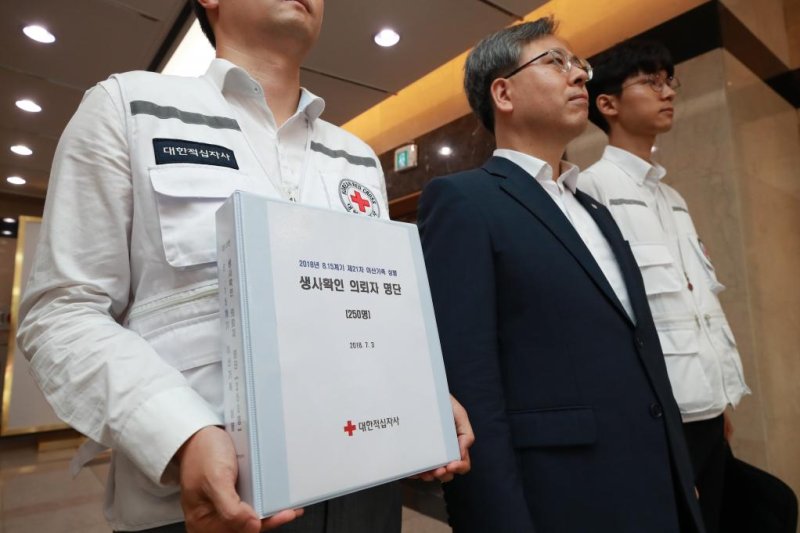North and South Korea have met to exchange lists of war-separated families to confirm their survival before finalizing participants in the upcoming family reunion in August.
Red Cross officials met at the border village of Panmunjom on Wednesday with lists of family members requested from each side to confirm their life and death, according to Yonhap.
"We are trading a list of family members in the South requested by their 200 North Korean family members and a list of North Korean family members requested by 250 South Korean family members," said an official of the South Korean Red Cross.
Officials will select surviving family members from the list and confirm the final 100 participants next month. The family reunion is scheduled for Aug. 20-26 at the North's scenic resort in Mount Kumgang.
The Wednesday meeting comes amid Pyongyang's threat to cancel the reunion unless a group of North Korean defectors return.
A July 21 editorial in state newspaper Rodong Shinmun said if the North Koreans are not returned promptly, the family reunion may not happen.
"If they are not returned, the upcoming family reunion event and the future of the North-South relations will meet an obstacle," it said. "South Korea must show its willingness to follow agreements in the Panmunjom Declaration by sending our female workers to their home country."
North Korea has said the defection of a group of female restaurant workers was part of a South Korean intelligence agency-led spy scam and demanded their return.
Meanwhile, renovation of the long-term empty reunion venue in the North has been underway since last month.
Unification Minister Cho Myoung-gyon said Tuesday U.N. approval was given to make the reunion a temporary exemption from sanctions to facilitate renovation work to refurbish the empty facility, according to Hankyoreh.
Under the sanctions, shipping construction materials from and to the North are not allowed.
A total of 131,896 people have been registered as separated family members as of April 30, according to a government figure. More than 55 percent have died and more than half are still alive, or are at least 80 years old.

